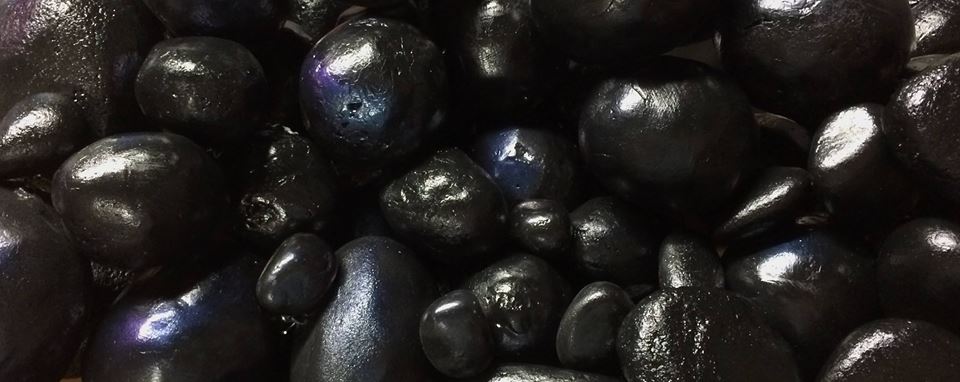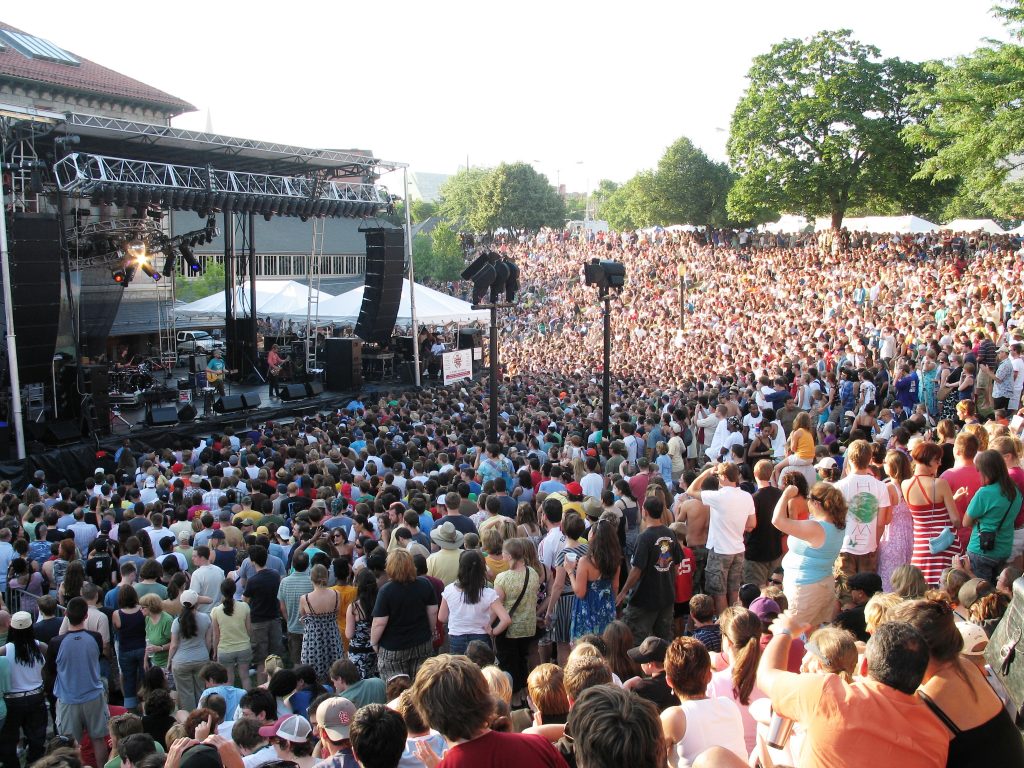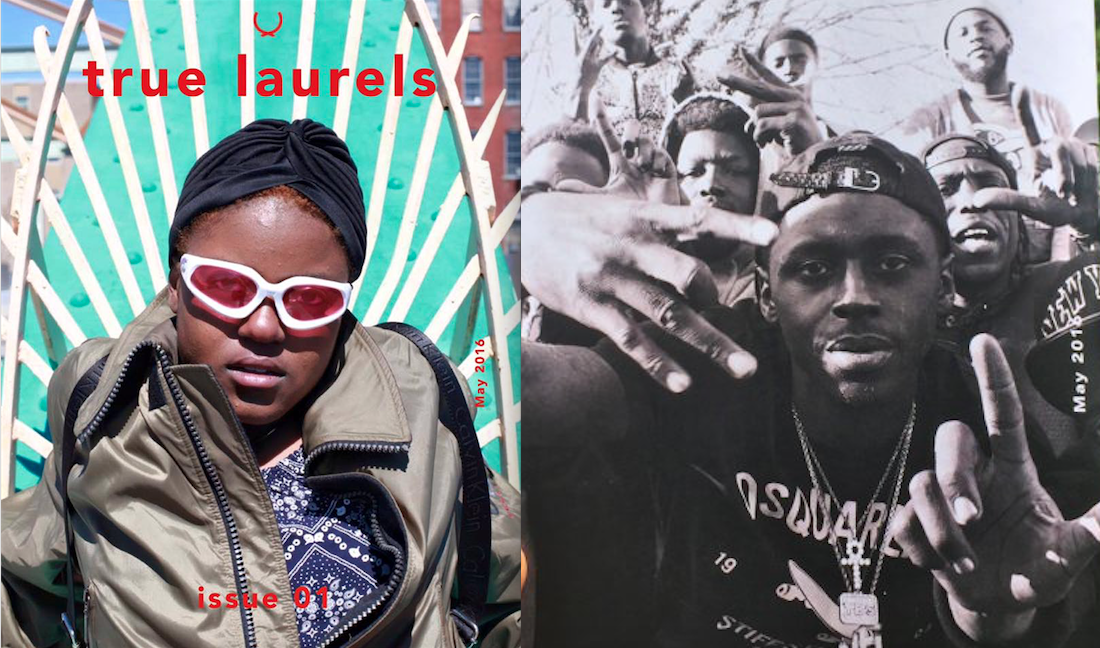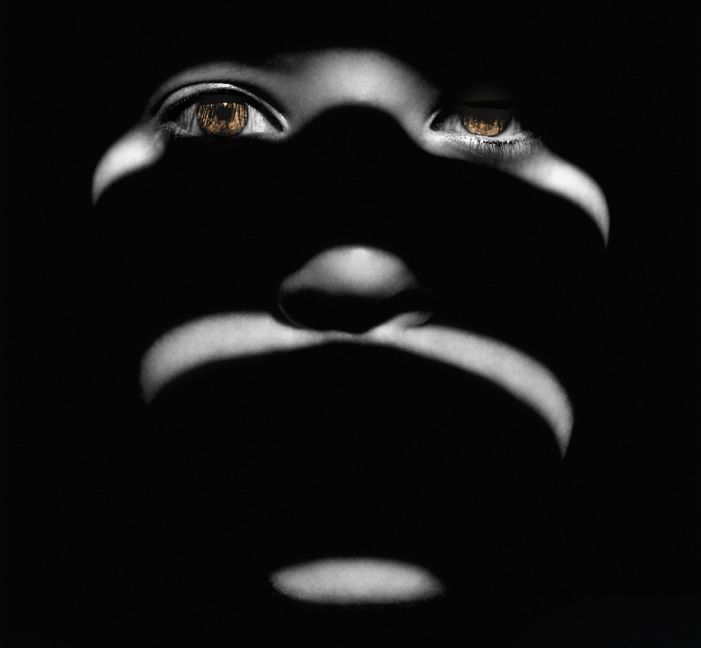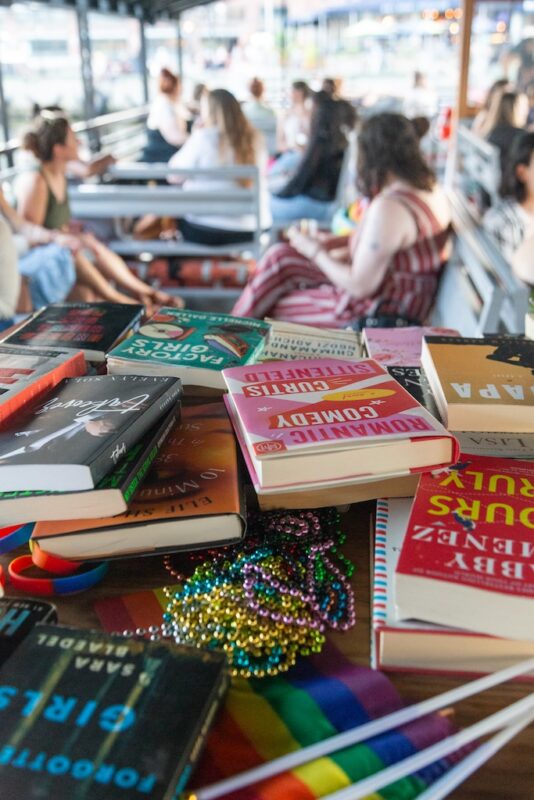Angela N. Carroll Interviews True Laurels Founder and Editor Lawrence Burney
Vibrant, radiant reflections of Baltimore art and alternative culture are bold archetypes of the True Laurels aesthetic. I have been a fan for a while, trolling their IG and website to read the latest and greatest in local and international talent of color.
Flipping through the digital articles or the print edition is always a beautiful experience, in that the images and stories you saw peering back were real people, real folks that could be your family, your neighbors, or those you ride the train with. I couldn’t think of any other publications that pridefully displays and privileges young black stories from Baltimore.
True Laurels is the brainchild of freelance writer Lawrence Burney. I had the opportunity to catch up with him as he launched the first print edition of True Laurels.
 Lawrence Burney
Lawrence Burney
First I want to tell you that I am just inspired. The print edition is beautiful. Its very black. Very Brown. Very Baltimore. I looked at the magazine and I don’t know if it translates in the digital in the same way as flipping through the physical magazine. There’s something about having a physical book to flip through that’s really powerful.
Exactly. The whole reason I wanted to do something physical is because I write for national magazines. The whole music writer world in the digital sense, like Twitter, it can be overwhelming at times. I had to question if I like what I’m listening to and writing about or am I limiting myself to one network. You can’t ignore the influence. If you see eight magazines on Twitter talk about so and so’s new song, even If I don’t like it I’m going to listen to it. It’s going to be present. It’s one community and you get used to it. It’s been 3-4 years and it’s the same characters online.
I want to create my own world. For a long time I have wanted to start my own publication and come together with young black folks and writers, but once I met some of them, and there are very few, once I met them, they don’t feel “black”– they are hired because they are black but they also make folks comfortable. A lot of the mainly white people that work at these places are not of the culture that they obsess about. Not that I was shooting people or selling drugs like some rap music covers, but I have an understanding of black American culture beyond the point of fetishization. The ups and downs.
And why does that make you more “black” ?
It doesn’t. But I find that most of the music we listen to and talk about covers those situations. I definitely grew up in that environment. I did not always participate in those activities, but it was very close to me. I grew up with these people, they are in my family. A lot of the young folks I wanted to collaborate with just wasn’t feelin it the way I was, because there was a certain disconnect that they have — to urban black America I guess. It’s a feeling you can pick up on.
I wanted to cover Baltimore artists and artists in this region, and I know not everyone cares about that ‘cause not everyone is from or cares about this region. Not everyone has the tenacity and strength to take a risk. Maybe not get paid all the time by larger magazines and start their own thing. That’s hard to sell to some people. Some people can’t do it unless they are compensated. Not everyone is willing to do that. I look at it like I want to be my own boss. Choose the content. Make Baltimore artists feel like they are in the in the top magazine in the country. Like when you pick up the magazine I want people to like the magazine because they like it, and it just so happens to be about Baltimore culture.

There’s an assumption that we don’t read or appreciate printed books, that everything has to be online or there has to be a screen. You’re breaking this taboo. Are the folks that you want to reach vibing with the print version or do they prefer the online publication?
I love magazines, the way they look and feel. I always liked magazines and books. If the quality is good I will reach all the people I want to reach. I was doing zines, and I could reach folks in the art and DIY scene. When I was twenty or twenty-one, I was exposed to MICA kids, [but before that] I wasn’t exposed to those kinds of people. I was introduced to the world of zines by being in the realm of MICA students.
I thought I should make a zine about my own interests. A zine is a cheaper indie version of a magazine you print at home or at fedex. You attract a particular group of people with zines. I wouldn’t have been attracted to that type of print when I was younger. I know for me to reach the same version of me when I was sixteen or seventeen it has to look official, grand, great photos, full color, magazine size.
I may not necessarily check off all those things on the list, but those things matter to the consumer. I was thinking about myself at first, but I can’t just think about myself anymore I have to think about what everyone likes. How folks respond. They like nice paper, color. Now I feel confident that I have a good product.
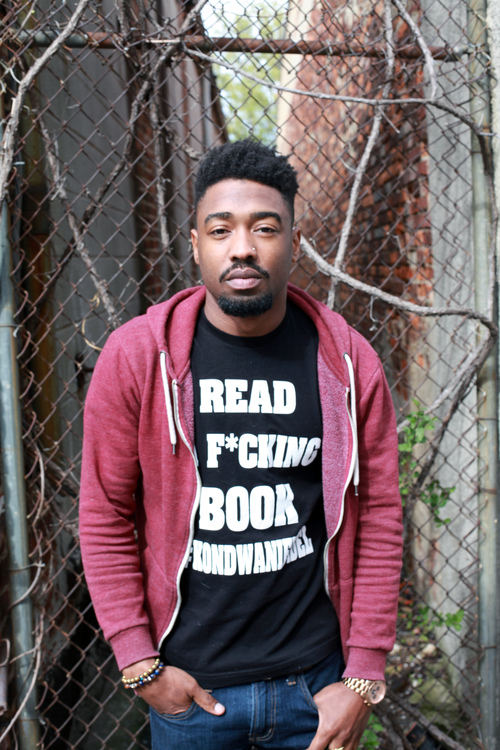 Kondwani Fidel by Ellis Marsalis III
Kondwani Fidel by Ellis Marsalis III
And it looks really good. And it felt good to see Baltimore folks printed in beautiful high gloss. I really appreciated that. You show a wide range of black Baltimoreans. A woman learning about Buddhism, a man who hates his father but fell in love with music, a drug dealer turned poet. Its a really powerful range of black identity and black experience. How are you finding the artists/folks you interview?
A lot of the people I seek out. A lot of people will reach out to me. The guy JPEG that wrote the diary, he was in the military and living in Japan. And he grew up in NY until he was twelve and lived in Alabama until he went into the military. He started doing music while in military and was looking to move back to East coast to shop music around but he knew he couldn’t afford NY so he started looking at surrounding cities. He looked at Philly, DC, Baltimore. When he got to Baltimore he liked the artists, found True Laurels site and zine and through TL he found all the people he wanted to work with and that helped him make a decision to move from Japan to Bmore.
Learning all of these stories really touches me a lot. Now I consider him a friend. We connect on many levels. Similar music tastes. His folks are Jamaican. I have a big Caribbean presence in my family from Jamaica and Trinidad so we can vibe on that. A lot of the folks I have a personal connection to but many I’m just a fan of and because they live in Baltimore I can insert myself into their lives enough where they feel comfortable allowing me to do that.
Like Skola, he started doing music a year ago and its taken off alot. I know about him because he’s in Lor Scoota’s group, one of the biggest street rappers in Baltimore right now. And I know his father, it’s a small world. He’s an OG guy from West Baltimore who does some work with Roc Nation. There are all of these crazy connections. I interviewed his father like a year ago. Shane the photographer was in town and he asked if I knew Skola, because it would be a dream for him to shoot him, and so I was able to set that up by reaching out to Skola’s father and we set that up the next day.
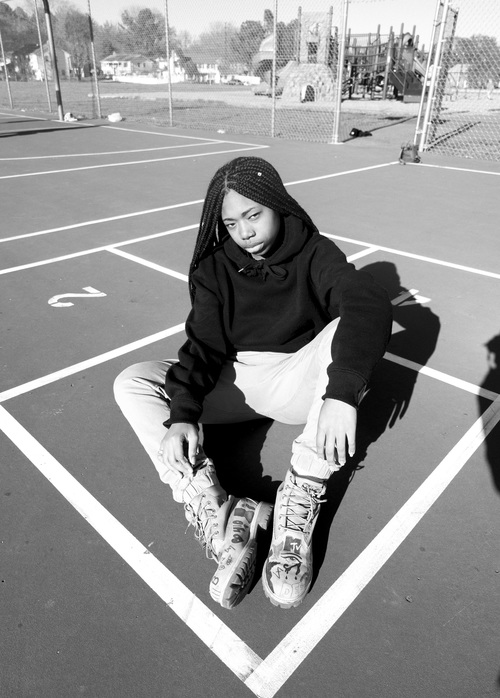 Deetranada by Audrey Gatewood
Deetranada by Audrey Gatewood
Dope. That’s one of the benefits of Baltimore being so small, right?
Exactly. And I feel really confident in my ability to report and present many different levels of blackness and black identity in Baltimore because I can touch all of those different places, which a lot of people here can’t do. I’m from the same Baltimore Skola is from, but since I came into the art scene now I can connect with people with different interests or who grew up differently. I didn’t care anything about rock music. I didn’t have white friends. All of that happened in the last five years of my life.
Now I’m starting to connect with black kids who grew up with identity issues because they didn’t feel black enough. Or they liked punk music so they got ostracized and outcast. And now I’m starting to make the connections I could have made my whole life but my mind was too small to open up to those kinds of people. So now I feel extra blessed to be able to portray a JPEG Mafia or a Kondwani, or a Skola or a whoever.
I feel a lot of pride in being able to connect to those different kinds of people. And I see myself in all of these people. All of these people can see themselves in each other. And really that’s what I want to do. It’s one Baltimore.
All of these people are connected whether they know each other personally or not. All of these people can resonate with somebody and relate to them.
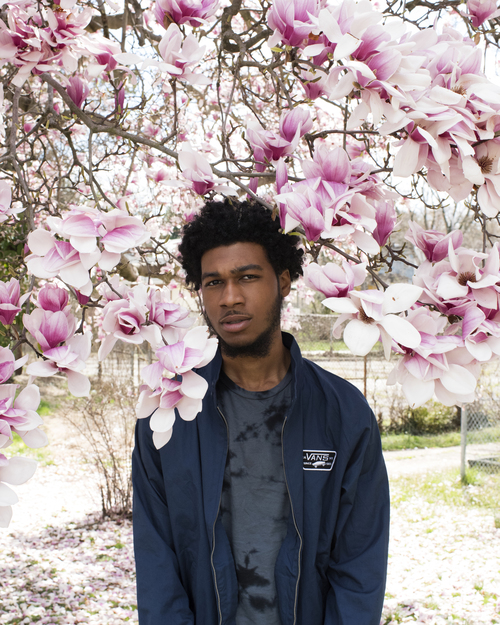 Photo by Shane Smith
Photo by Shane Smith
Talking about that, Baltimore and the way it is represented. Music is a significant part of the magazine, and fashion and alternative culture are discussed as well. How would you define the Baltimore sound right now, or musicians coming out of Baltimore? Everybody knows Baltimore for club music. Is there a new genre emerging?
I don’t think there is a [new] sound yet. The new generation is laying the foundation for a new sound to be born. A lot of the rappers may not have a production sound that is unique to Baltimore, [but] the way people talk here is very unique. Nobody sounds like someone from Baltimore. There are certain similarities to DC or Philly, but that distinguishes people right off the jump. So I think we are starting to be able to distinguish ourselves from the pool of everybody but there isn’t one sound. But I think its all beautiful, what’s been happening the last three four years.
When I was growing up I didn’t have any local artists that I cared about. Maybe Dru Hill? So just that alone is going to inspire the next sound. The fact that there are artists here now that young kids look up to that want to do music because they see artists having success. Even if its just on a local level some of the artists are getting a million views on their videos, record deals even if they are small deals, and sponsorships from Shoe City and DTLR. That’s going to impress a little kid to want to be an artist. Its all the other things going on with the music, culturally.
It isn’t a sound, but a new culture and identity being formed and people having the audacity to put themselves out there, is kind of a new thing.
For the longest time it was believed that if you were from Baltimore, you know, you’re not going to make it. I’m just glad and I hope that I’m being a help to reshape that mentality. Cause it’s a bunch of bullshit.
There’s a bunch of people in Baltimore who are doing great things in the city. They don’t focus on those people. They would rather focus on crabs in a barrel. Its no different than any other city. People don’t get outside of here to realize that.
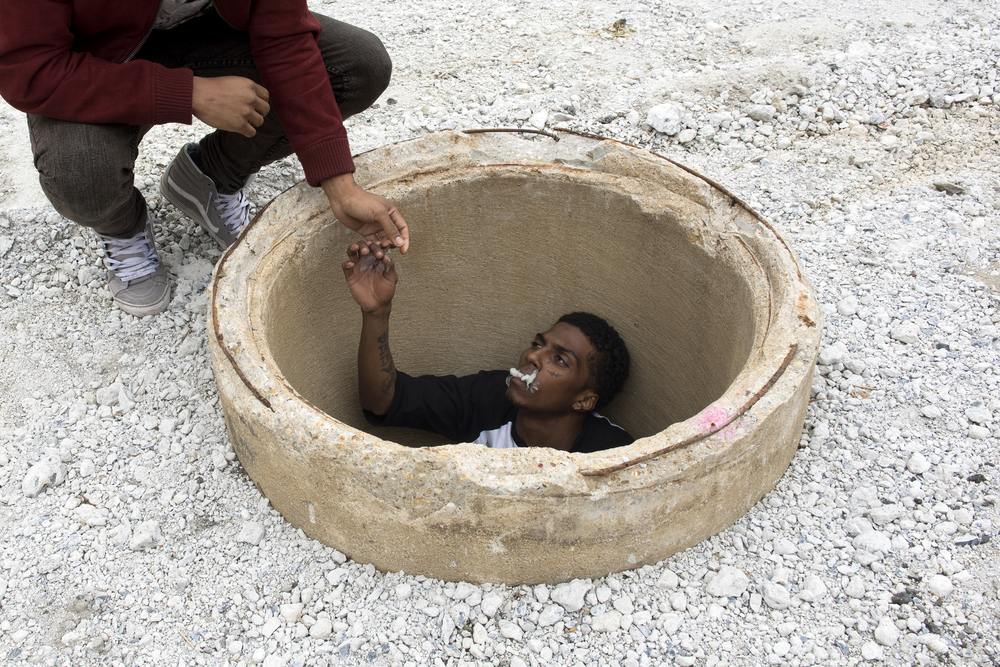 Photo by Shane Smith
Photo by Shane Smith
In your editor’s notes you talk about the pigeonholing of Baltimore. And that you hope TL breaks that. Do you think the pigeonholing is making the resurgence in art and music happen? Is the resurgence in relation to Freddie Gray or has it been happening for a while?
I think it was always happening. Baltimore is a significant city in America’s history, especially in relation to black people. Baltimore was the first place to have redlining, racially zoned housing. Frederick Douglas, Harriet Tubman, Billie Holiday lived here. The Royal Theater. These are monumental cultural figures. Now we have T-Nehisi Coates. Dru Hill was a great RnB group. There are layers and layers. [Baltimore] is an overlooked place, not fully disregarded, but it is overlooked. I don’t know what happened for people to only know Baltimore for heroin and The Wire.
Art has always been created here, but now people are paying attention more. But if I could be killed for being myself, I might as well be my full self. Why not express myself? What’s the worst thing that could happen? We’ve already seen in the past year all the things have blossomed out of Baltimore. This is not new.
Abdu is starting to get buzz now, but he’s been doing music for years. I think since Freddie Gray, [the experience] can teach people to stay committed because you don’t know what can come out of it. I know I mentioned in the story about the old Baltimore mixes and how that influenced me. All we hear about is club music because nobody archived [the rap mixes]. I’m trying to tell those stories because I don’t want that history to be lost. They’ll know where they come from.
What are you listening to right now?
Skepta, a grime artist out of London. All the Reggae Gold albums are on itunes from 93 to present. That’s such a memorable part of my childhood. I didn’t realize they were real albums, I thought they were just mixtapes. I’m listening to Wizkid from Nigeria. A lot of Baltimore artists. I love Adbu’s new mixtape. YBS Skola. I listen to a lot of music so I go through phases of being obsessed with something for a few weeks and then I move onto something else. Lots of Fela Kuti in the car. My daughter has been listening to Thriller, that’s her wave right now. She just wants to watch Thriller and videos of the Caribbean carnival.
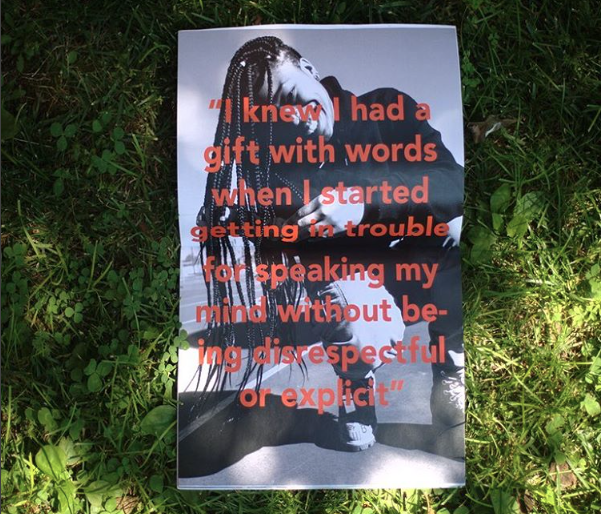
I love that. And that’s most of us. But there’s the assumption that if you’re black or from Baltimore that all you listen to is club music or rap.
Exactly
I appreciated that I couldn’t easily identify any location in any of the photography.
I wanted people to be curious. You wouldn’t think that these pictures were shot in Baltimore. This is Baltimore. We have cherry blossom trees. Another thing I noticed, from folks in the art scene, they know a fraction, a 3-mile radius of Baltimore. Many people do not have access to the worlds that I am showing in True Laurels. I want people to view Baltimore as a place worthy of exploring. It’s a small city but its not that small. You can learn so much. I want it to be a learning experience as well as pleasing aesthetically
What can we expect for True Laurels Issue 2 and when will it drop?
August. [Issue 02] will build on presenting Baltimore and people that others had no idea about. [You will see] your favorite artists featured. Be prepared to learn more. Be prepared to be engaged in that environment and expect to gain a bigger appreciation for Baltimore and make people proud of being from here and make people not from here more curious about the culture.
Where can we buy True Laurels issue 01?
Truelaurels.com, Check the True Laurels IG Red Emmas, Open Studios DC, Printed Matter in NY and more places around the country.

*****
Author Angela N. Carroll is an artist-archivist; a purveyor and investigator of contemporary culture.
Photo Credits: Audrey Gatgewood, Shane Smith, and Ellis Marsalis III
